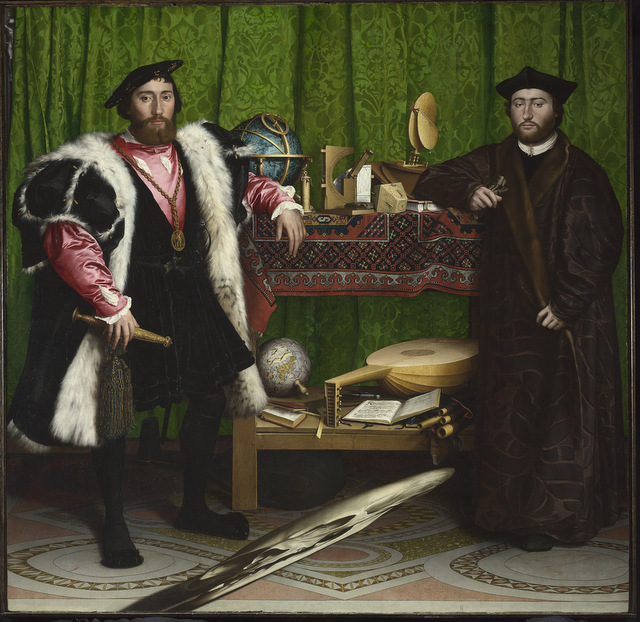As The National Gallery prepares its main galleries for its Veronese blockbuster, the usual exhibition space in the Sainsbury Wing is displaying a history of the gallery's German art, including highlights from its collection. The exhibition sets the scene in the first room by displaying some paintings by Italian and Flemish masters, including Raphael and Van Eyck, as the benchmark that German art would have been held against when it was originally purchased by the gallery.
The exhibition then takes us on a journey that explains how German art divided opinion at the time with many people claiming that the National Gallery should not be purchasing such 'ugly' art. It takes a few rooms before we hit upon some of the great German works on display including Hans Holbein's The Ambassadors with its stretched skull, Lucas Cranach's Cupid complaining to Venus and a print of the brilliant Melancholia by Albrecht Durer.
This is a small show and it ends just at the point that it seems to be hitting its stride. The Queen's Gallery put on a similar exhibition on the Northern Renaissance just over a year ago that is still fresh in the memory, and this exhibition doesn't measure up to that one nor does it offer a greater insight into German art than that show did.
It's a fascinating tale to look into the history of the gallery's collection of German art, but there are too few great works on display to make for a complete exhibition. Visitors may also feel hard done by paying admission for a show where the vast majority of artworks are owned by the National Gallery and are usually available to see for free as part of the permanent collection.
Strange Beauty: Masters of the German Renaissance at The National Gallery is on until 11 May. Tickets are £8 for adults, concessions available.









